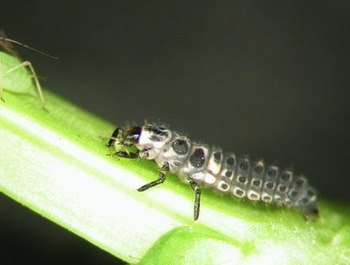
Predatory Ladybird Larvae Natural Aphid Control - 250 Larvae
FGADC£58.99
In stock - available to buy nowFREE delivery on all orders over £60.00
Product information
Identifying Aphids
Aphids may be better known as greenfly or blackfly. Almost any crop can be infested with them and they are particularly common. This pest family is one of the biggest on the allotment.
The most common signs that you have Aphids are:
- Leaf Distortion
- Leaf Yellowing
- Sticky upper-surface or leaves
- White skins on upper surface of leaves
- Sometimes, black sooty mould from sticky honeydew produced by aphids
Aphids can be active all year round but are most active at temperatures between 10 and 35
How It Works
Ladybirds are the gardeners’ favourite for Aphid control! They do wonders in the garden or greenhouse! The adult and the larvae are completely ravenous and will eat any greenfly or blackfly in their path. The ladybirds we stock are the red, two-spotted ladybird, named Adalia Bipunctata – a native species to the UK.
Adult ladybirds can lay up to 50 yellow ladybird eggs a day under the leaves of plants and up to 1500 in their life to continue to cycle of natural pest control.
The larvae are a grey colour with orange markings and measure up to be roughly 0.5mm long, they are much more voracious than their parents.
How to use
Open the bottle cap and release the larvae either first thing in the morning or last thing and night by gently scattering them over affected plants.
Make sure to release the ladybird larvae as soon as possible once they have arrived to avoid them eating each other in the bottle.
Apply ladybird larvae when the Aphids are present on plants. Make sure the temperature is above 10°C but try to keep it between 15°C and 20°C for best control.
Release from May to mid-August, they can be released earlier if they will be in a greenhouse, however, do not release them if there is any food around as they will either starve or eat each other.
Technical specifications
| Aphid (Adalia bipunctata) Organic Pest Control Adaline B | 250 Larvae In A Bottle |
| How it works | Adults and larvae feed on most types of aphid |
| Species controlled | Most types of aphid |
| When to use | Apply as a curative. |
| Rates of use | 2-10/m² |

